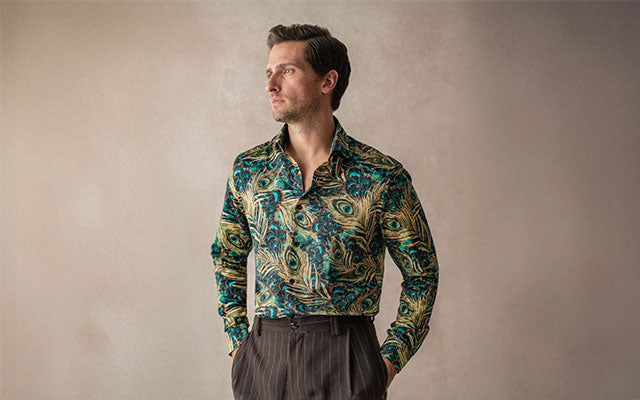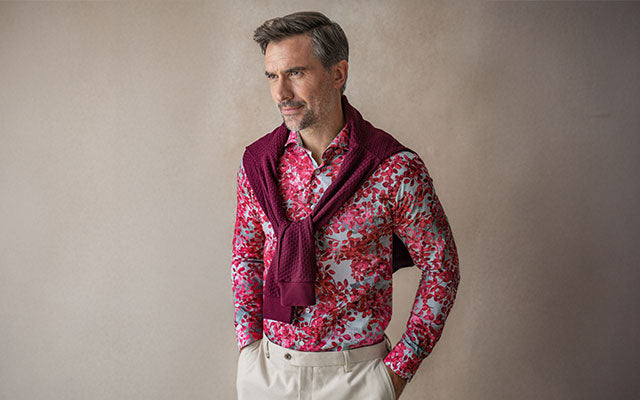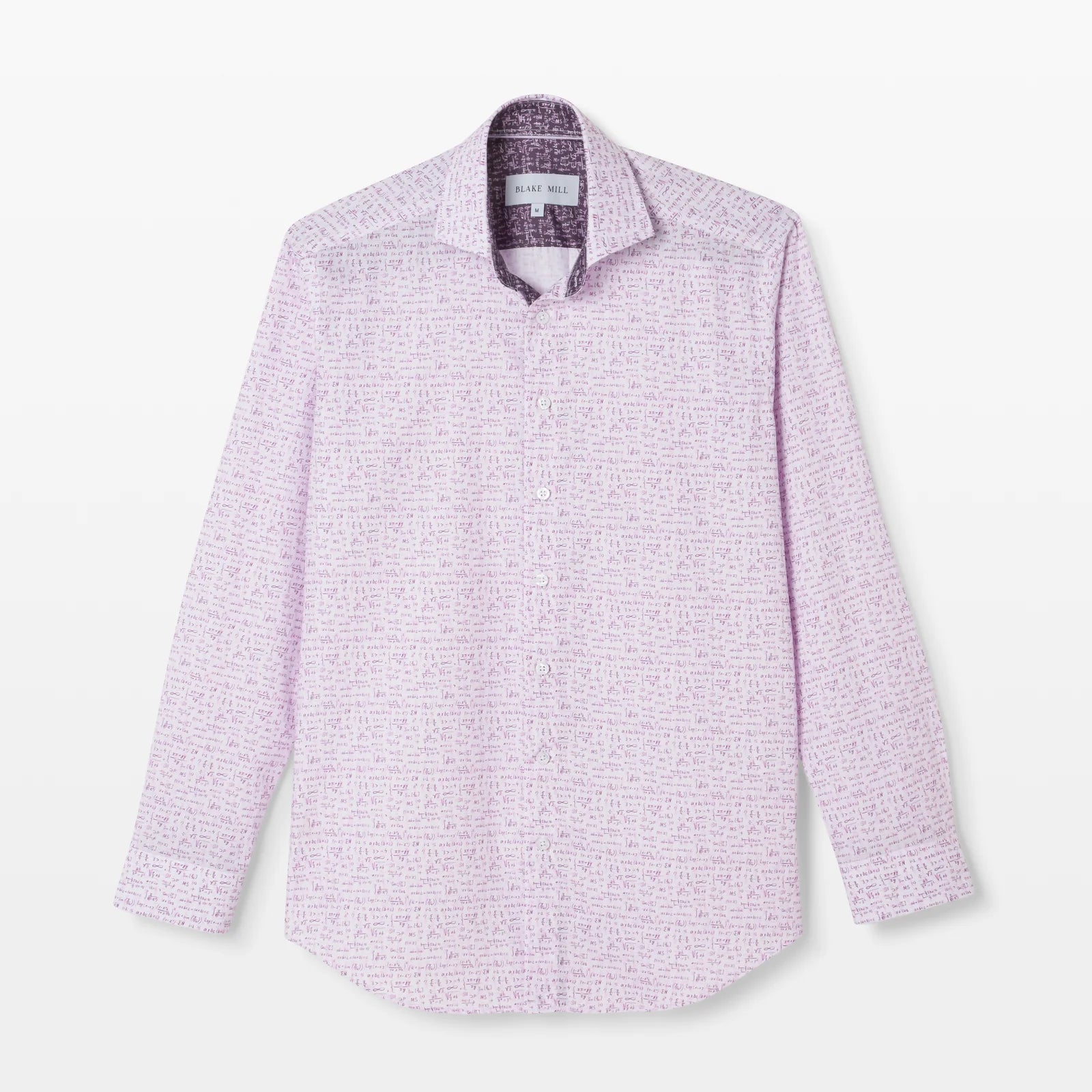The Influence of Shirt Colour on Perception and Mood
The Psychological Impact of Shirt Colours
The colour of our shirts can have a powerful psychological impact on our mood and perception. Colour psychology is the study of how colours affect human behaviour, emotions, and mental processes. It explores the way different colours can elicit specific emotional responses and influence our psychological state. Understanding the psychological impact of shirt colours can help us make informed choices when selecting our wardrobe.
How Different Colours Influence Mood and Energy Levels
Different colours have the power to influence our mood and energy levels in various ways. Here are some examples:
- Blue: Known for its calming and soothing effect, blue can promote feelings of relaxation and tranquillity. It can also enhance focus and productivity.
- Red: A vibrant and stimulating colour, red can increase energy levels and evoke strong emotions. It is often associated with passion and excitement.
- Yellow: Bright and cheerful, yellow can instil feelings of happiness and optimism. It is believed to boost creativity and stimulate the mind.
- Green: Symbolising nature and harmony, green has a calming effect and can promote feelings of balance and renewal.
- Purple: Purple shirts are often associated with luxury and creativity, purple can foster a sense of inspiration and spirituality.
- Orange: A warm and energetic colour, orange can evoke feelings of enthusiasm and vitality.
Colour Psychology: What Your Shirt Colour Says About You
The colour of your shirt can reveal a lot about your personality and the image you want to portray. Here are some interpretations of popular shirt colours:
- White: People who wear white shirts are often seen as organised, clean, and detail-oriented.
- Black: Black is associated with power, authority, and sophistication. Those who wear black shirts are often perceived as confident and mysterious.
- Blue: Blue is a universally calming colour and is often associated with trustworthiness and dependability.
- Red: Red is an attention-grabbing colour that symbolises passion and strength. People who wear red shirts often exude confidence and charisma.
- Green: Green represents growth, balance, and harmony. Those who wear green shirts are often seen as refreshing and down-to-earth.
- Yellow: Yellow is known for its association with happiness and optimism. People who wear yellow shirts are often seen as cheerful and approachable.

The Social Perception of Shirt Colours

The colour of your shirt can significantly impact the way others perceive you, especially in social and professional settings. First impressions are often formed based on a person's appearance, including their choice of clothing. In professional settings, shirt colour can convey a sense of professionalism and authority. In social settings, it can influence how approachable and friendly you appear. Understanding the social perception of shirt colours can help you make intentional choices that align with the impression you want to create.
First Impressions: How Shirt Colour Affects Perceived Personality Traits
The colour of your shirt can influence the perceived personality traits others attribute to you. Here are some examples:
- White: Often associated with purity and cleanliness, white shirts can convey a sense of honesty and integrity.
- Black: Black shirts can be seen as sophisticated and powerful, often associated with leadership qualities.
- Blue: Blue shirts are often viewed as trustworthy and reliable, reflecting qualities such as loyalty and dependability.
- Red: Red shirts can be perceived as bold and confident, suggesting traits such as assertiveness and passion.
- Green: Green shirts can evoke a sense of harmony and calmness, reflecting qualities such as empathy and balance.
The Role of Shirt Colour in Professional Settings
In professional settings, the colour of your shirt can have a significant impact on the impression you make. Here are some considerations:
- Blue: Blue is a popular choice for professional settings as it conveys trustworthiness and reliability.
- White: White shirts are often seen as classic and professional, suitable for formal occasions.
- Grey: Grey shirts can project a sense of professionalism and neutrality, making them a versatile choice.
- Black: Black shirts can exude authority and power, but they should be reserved for more formal or high-level settings.
- Patterns: Patterned shirts can add personality to your outfit, but it's important to choose patterns that are appropriate for the setting.
Colour and Mood: A Deeper Dive
The relationship between colour and mood is a fascinating area of study. The colours we surround ourselves with can have a profound impact on our emotional well-being. Understanding this connection can help us make conscious choices when selecting the colours of our shirts and other elements of our environment.
The Connection Between Shirt Colour and Emotional Well-being
The colour of your shirt can influence your emotional well-being in subtle but significant ways. Here's how:
- Blue: Wearing a blue shirt can promote a sense of calmness and relaxation, reducing stress and anxiety.
- Yellow: A yellow shirt can evoke feelings of happiness and positivity, boosting your mood and overall well-being.
- Green: Green shirts can create a sense of harmony and balance, fostering a feeling of contentment and tranquillity.
- Red: Red shirts can increase energy levels and stimulate excitement, making you feel more energetic and motivated.
- Purple: Wearing a purple shirt can inspire creativity and spirituality, enhancing feelings of inspiration and inner peace.
- Orange: An orange shirt can create a sense of enthusiasm and vitality, invigorating your mood and outlook.
How to Choose Shirt Colours for Positive Mood Enhancement
When choosing shirt colours for positive mood enhancement, consider the following:
- Determine the mood you want to enhance: Are you looking to feel more calm and relaxed, or energised and motivated?
- Consider your personal preferences: Choose colours that resonate with you and make you feel good.
- Understand the psychology of colours: Research the emotional associations of different colours to make informed choices.
- Experiment with different shades and tones: Different variations of colours can evoke different emotional responses.
- Use colour combinations: Combining different colours can create a desired mood or evoke specific emotions.
Here is a text table summarising the emotional associations of different shirt colours:
|
Colour |
Emotional Association |
|
Blue |
Calmness, relaxation, trustworthiness |
|
Yellow |
Happiness, positivity, optimism |
|
Green |
Harmony, balance, contentment |
|
Red |
Energy, excitement, passion |
|
Purple |
Creativity, spirituality, inspiration |
|
Orange |
Enthusiasm, vitality, invigoration |
Why not read our guide, Panache in Pink: The Resurgence of Pink in Mens Fashion.
The Influence of Culture on Colour Perception
Culture plays a significant role in how we perceive colours and their symbolic meanings. Different cultures may have varying interpretations and associations with certain colours. Understanding the influence of culture on colour perception can provide valuable insights into global trends and help avoid cultural misunderstandings.
Cultural Variances in Colour Symbolism and Its Effects on Shirt Colour Choices
Colour symbolism varies across cultures and can impact the choices we make when selecting shirt colours. Here are some examples:
- In Western cultures, white is often associated with purity and innocence, while in some Eastern cultures, it symbolises death and mourning.
- In many Asian cultures, red is a symbol of luck and happiness, while in Western cultures, it signifies passion and power.
- In Western cultures, black is often associated with sophistication and elegance, while in some Eastern cultures, it represents mourning and sadness.
- In different African cultures, specific colours may hold deep cultural and spiritual significance, representing different tribes and traditions.
Global Trends in Shirt Colours and Their Social Implications
Global trends in shirt colours can reflect cultural preferences and societal shifts. Here are some examples:
- Bright and vibrant colours may be popular in regions with a more extroverted and expressive culture.
- Neutral and muted tones may be favoured in regions with a more reserved and understated culture.
- The popularity of certain colours may change over time, influenced by fashion trends and societal values.
- Global events and movements can influence colour choices, such as the increased prominence of sustainability leading to a rise in earthy and natural tones.
Colour Theory in Fashion Design

Colour theory is an essential aspect of fashion design. It involves understanding how different colours interact and complement each other to create visually appealing and harmonious outfits. By applying colour theory principles, designers can create captivating and impactful combinations that enhance the overall aesthetic and mood of their designs.
The Art and Science of Choosing Shirt Colours in Fashion
Choosing the right shirt colours in fashion requires a balance between artistic expression and scientific understanding. Here are some key considerations:
- Colour harmony: Understanding the colour wheel and complementary colours can help create visually pleasing combinations.
- Contrast: Experimenting with contrasting colours can create an eye-catching and dynamic look.
- Colour psychology: Considering the emotional associations of different colours can help convey the intended message or mood.
- Seasonal trends: Fashion designers often draw inspiration from seasonal colour palettes to create collections that align with current trends.
- Personal style: Ultimately, choosing shirt colours in fashion is a personal choice that reflects individual taste and style preferences.
Integrating Colour Theory Into Your Wardrobe Choices
You can integrate colour theory into your wardrobe choices to create cohesive and stylish outfits. Here's how:
- Start with foundational colours: Build your wardrobe around versatile and timeless colours such as black, white, and neutral tones.
- Experiment with complementary colours: Pair colours that are opposite each other on the colour wheel for a bold and striking look.
- Consider monochromatic looks: Create depth and interest by incorporating different shades and tones of the same colour.
- Use accent colours: Add pops of vibrant colours to elevate and add personality to your outfits.
- Pay attention to undertones: Understanding warm and cool undertones can help determine which colours complement your skin tone.
Case Studies and Research Findings
Research studies and case studies provide valuable insights into the influence of shirt colour on perception and mood. By examining real-life examples and controlled experiments, we can gain a deeper understanding of the subject.
Analysing the Impact of Shirt Colour in Various Social Experiments
Social experiments have been conducted to analyse the impact of shirt colour on perception and mood. These experiments involve observing and comparing participants' reactions to different coloured shirts in controlled settings. The findings shed light on how shirt colour can influence first impressions, emotions, and social interactions.
Real-Life Examples of Shirt Colour Influencing Mood and Perception
There are numerous real-life examples of how shirt colour can influence mood and perception. From personal experiences to notable individuals, these examples illustrate the power of shirt colour in influencing the way we are perceived by others and how we feel about ourselves.
Frequently Asked Questions
What Are the Most Universally Flattering Shirt Colours?
The most universally flattering shirt colours are those that complement a wide range of skin tones and enhance one's overall appearance. White and navy are popular choices that tend to flatter most individuals.
Can Wearing Certain Shirt Colours Improve Mental Health?
While wearing certain shirt colours cannot directly improve mental health, there is evidence that certain colours can have a positive impact on mood and well-being. Twill and oxford shirts in soothing shades can contribute to a more positive and uplifting state of mind.
Colours are one thing, but you might also like to read The Role of Pattern and Print in Shirt Fitting: What Works Best for Your Body Type.




